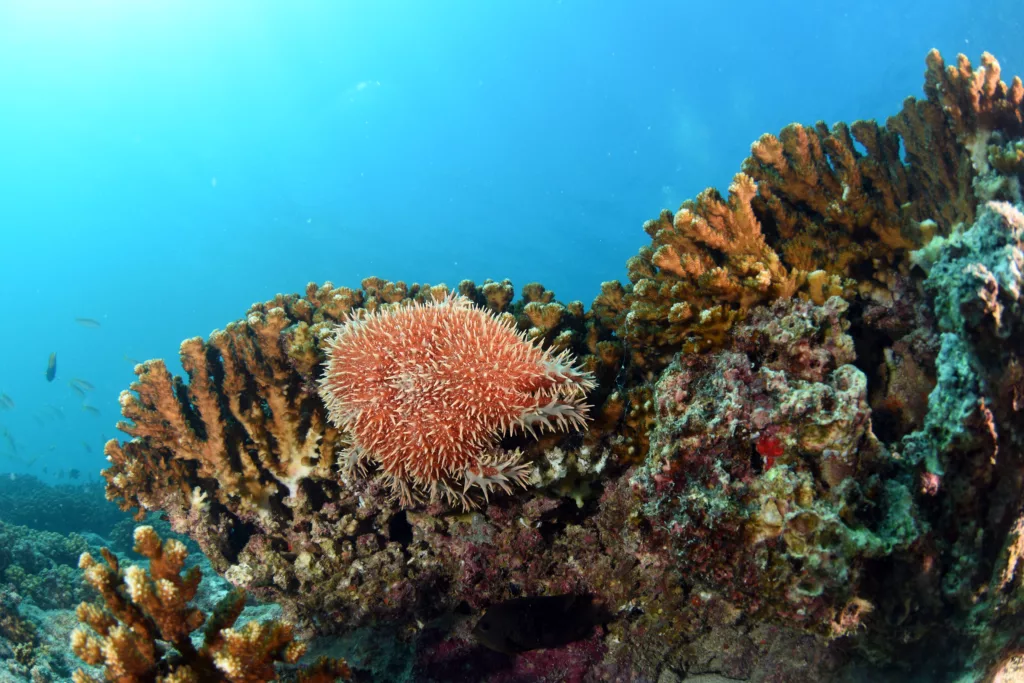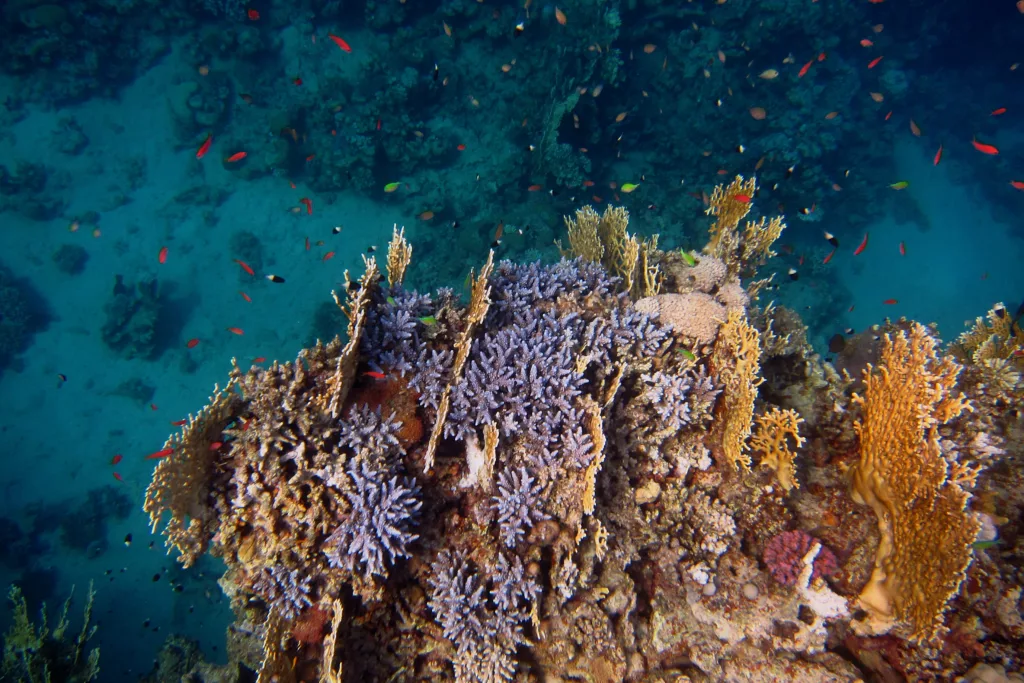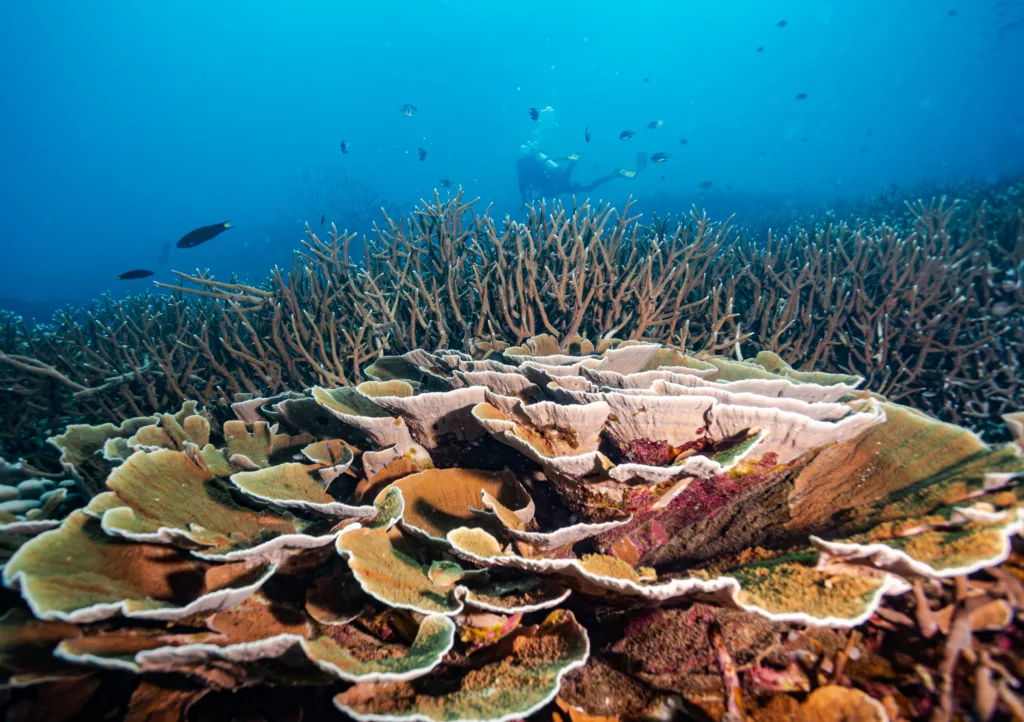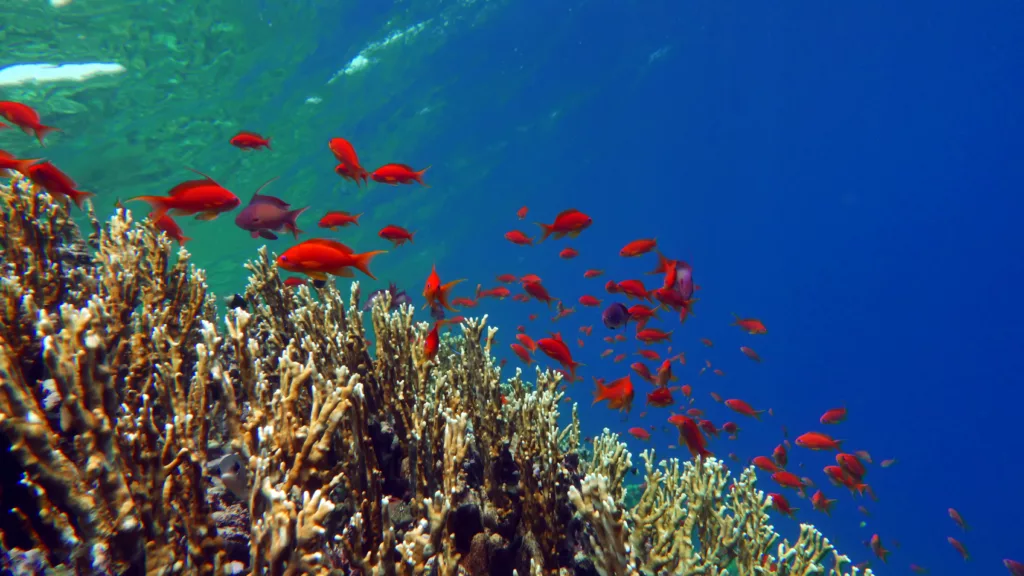Diving into the quiet depths of the ocean, the silence envelops you, creating a world where communication takes on a new form. In the serene underwater realms, especially in breathtaking locations like Bali, where the vivid colors of marine life captivate the eyes, the importance of efficient communication cannot be overstressed. This blog explores how mastering hand signals can significantly enhance safety and enjoyment during your underwater adventures. Whether you’re planning a trip to the must-visit dive sites in Bali or simply curious about scuba diving, understanding the subtle yet crucial art of hand signals is key to unlocking a safer, more informed diving experience.
The Basics of Scuba Diving Communication
Underwater communication is a fascinating and crucial skill for any diver. The silencing effect of the water means that spoken words are useless, and visibility can also be limited. Here, hand signals emerge as the primary mode of communication, an underwater language that is both universal and essential. This method allows divers to share important information about their condition, intentions, or external elements like marine life and potential hazards. Beginners start learning these signals in controlled environments like dive pools. As they progress, the range of signals they must recognize and use grows, covering practical needs (ascending, descending) and responses to different scenarios (distress, low air, entanglement). Advanced divers expand this vocabulary further, often developing customized gestures to convey complex messages in environments like deep wrecks or cave systems. This robust framework of gestures ensures safety and enhances teamwork, making each dive not just an exploration but a coordinated effort, where each participant understands their surroundings and can confidently depend on their dive buddies for cooperation and safety.
Why Hand Signals are Critical for Safety

Imagine yourself immersed in the vibrant, diverse underwater world of Indonesia, navigating through brilliant coral reefs or nearing the mysterious remains of a sunken ship. Suddenly, an unexpected current stirs the water or visibility drops. In these critical moments, clear and instant communication through hand signals becomes invaluable. These gestures can signify a variety of messages—warnings of danger, signals to hold position, or cues to ascend or descend. Mastery of this form of communication ensures that all members of a dive group can make informed decisions swiftly, potentially averting accidents. Effective use of hand signals contributes directly to divers’ safety, acting as a lifeline that connects each individual to the group, allowing them to share observations, manage emergencies, and even conserve their air supply by minimizing unnecessary movement and preventing panic. This skill is as vital as any safety equipment, providing reassurance and structure to the potentially unpredictable underwater environment.
Learning and Practicing Hand Signals

The journey into the mesmerizing world of scuba diving begins with mastering the basics, particularly the essential hand signals. Tourist-friendly destinations such as Bali, with its renowned diving schools, offer excellent courses that focus intensively on these non-verbal skills. Diving instructors emphasize not only the need to learn the standard signals but also the importance of regular practice. This repetition ensures that the signals become second nature, enabling divers to communicate effortlessly under water. Regular drills, both in and out of water, help reinforce this crucial knowledge. It’s important to remember that proficiency in underwater communication is akin to learning a new language—practice is the key to fluency. Moreover, seasoned divers often engage in continuous learning, adapting their knowledge to incorporate new signals or refining techniques that make their gestures more distinct and understandable to others, thereby enhancing mutual understanding and safety during dives.
Hand Signals Unique to Specific Dive Sites
The underwater environment varies drastically around the globe—from the icy waters of the Arctic to the warm currents of tropical seas. Each location can present unique challenges, necessitating specialized hand signals. For example, dives near shipwrecks or in caves might include signals specific to navigation and safety precautions unique to those environments. Divers exploring the vibrant reefs and dramatic landscapes in Bali are briefed on local conditions by experienced dive guides who introduce hand gestures tailored to common local challenges. These may include particular signs for spotting rare marine animals, warnings about strong currents, or signals indicating the start of an ascent. The ability to quickly adopt and use these site-specific signals not only enhances safety but also enriches the diving experience by allowing divers to interact more comprehensively with their environment. Learning these particular signs gives divers a greater confidence and understanding of their surroundings, allowing them to fully immerse themselves in the unique beauty of each dive site.
Tips for Traveling Divers in Bali

Bali, with its exquisite dive sites, attracts many diving enthusiasts keen to explore its underwater wonders. For those planning a trip, here are some invaluable tips: Start by learning both common and site-specific hand signals from the dive operators in the area. These preparations will enhance your safety and enjoyment. Always ensure that you dive within your certification limits and maintain clear communication with your dive buddy. This practice helps prevent misunderstandings and ensures mutual support. Bali offers a variety of compelling dive sites like the historical USAT Liberty Wreck at Tulamben and the peaceful waters around Menjangan Island, each providing distinct experiences and challenges. Familiarizing yourself with the specific conditions and required signals for these sites can greatly enhance your diving adventure. Effective communication is crucial, not just for safety but for maximizing the enjoyment of uncovering the mysteries and attractions beneath the Bali waters. Prepared and well-informed divers often find their experiences more rewarding and stress-free.
Concluding Dive Thoughts: Silent Signals Speak Volumes
As you prepare to dive into the silent, aqueous expanse of the ocean, remember that effective communication through hand signals is as crucial as your diving gear. Whether it’s the serene dive sites of Bali or any other part of the world, mastering this silent language not only ensures safety but enhances your overall diving experience. So, before you plunge into your next underwater adventure, take the time to learn, understand, and practice these lifesaving signals. Embrace the quiet, and let your hands do the talking.


Absolutely fascinating read! The importance of hand signals in diving has been communicated effectively. Makes me want to explore the underwater world of Bali!
This is such an insightful post! I never realized the impact of hand signals on diving safety until I took a course that focused on underwater communication. It’s amazing how much it can improve your overall experience.
Thank you for sharing your experience, Rohana Binte! We’re thrilled to hear that our post resonated with you. At Pebble and Fins, we believe that effective underwater communication is crucial for a safe and enjoyable diving experience. That’s why we offer dedicated training facilities for local staff and around us, ensuring that everyone has the skills they need to thrive in the underwater world. Revisit us from time to time to learn more about our mission to change the world, one resort at a time.
I completely agree that mastering hand signals is crucial for scuba diving. As a seasoned diver, I’ve had my fair share of close calls and situations where clear communication through hand signals saved the day.
Dear Siti Fatimah, we’re thrilled to hear about your positive experiences with mastering hand signals during scuba diving. At our resort in Bali, we prioritize education and job opportunities for the local community. In fact, we have dedicated training facilities for our staff and surrounding areas. We believe that by providing these resources, we can make a real impact at the local level. Revisit us from time to time and join us in our mission to change the world, one resort at a time. For more information or to learn more about our courses and packages, please feel free to contact us at [email protected] or +62 857 3891 8262.
I love how this post highlights the importance of learning site-specific hand signals. As a beginner, I was surprised by how much difference it made during my first dive in Bali.
Dear Ahmed, thank you for sharing your experience with us! We’re thrilled to hear that learning site-specific hand signals made a significant difference during your first dive in Bali. At Pebble and Fins, we take pride in providing our guests with not only an exceptional diving experience but also the knowledge and skills necessary to navigate the underwater world safely and confidently. If you have any questions or need further guidance on our training facilities or local staff training programs, please don’t hesitate to reach out to us at [email protected] or +62 857 3891 8262. We’re always here to help. Looking forward to welcoming you back to Bali soon! Best regards, The Pebble and Fins Team